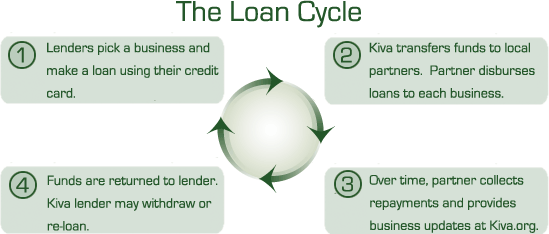By Morgan Phelps

With social-networking sites now the rage in cyberspace, it was only a matter of time before global institutions tried to catch that wave and ride it for the common good. Hence, the emergence of web sites that cater specifically to the worldwide micro-financing community.
Microfinance involves supplying loans and other financial services to the world’s poor. According to the Consultative Group to Assist the Poor (CGAP),the poor need a variety of financial services, including:
- working capital loans,
- consumer credit,
- savings,
- pensions,
- insurance and,
- money transfer services.
Microfinance is not specifically a web phenomenon. Although the practice is as old as family members loaning money to one another, it did not gain popularity as a formal developmental strategy until 1970 when Dr. Muhammad Yunus at Grameen Bank created “solidarity lending.” In 1973, ShoreBank was founded in Chicago as the first community microfinance institution.
Loans are typically lower than $1,000 and financed by multiple lenders working together to dilute risk. But more recently lenders and hopeful business owners in the developing world are meeting up on newly created microfinance networking sites.
Kiva is one of the new microfinance web sites. Kiva partners with already established microfinance institutions around the world to forge connections with businesspeople on a global basis.
Registered users can surf profiles on the site to find out who needs help and who is currently lending. They can choose who they want to lend to and in what amount. The loans typically last 6 to 12 months, during which time the lender is updated about the business’ progress.
The success of microfinance for lenders and borrowers alike over the past three decades proves that the poor are generally very conscientious about paying back their loans, so an enduring pool of capital is available to assist needy businesspeople without government subsidy.
Some question whether independent microfinancing efforts can undercut government development and aid projects, but there is no conclusive research to substantiate this reservation.
Although microfinance has made serious headway in reducing poverty where it has been used, CGAP notes that there is still much more work to be done — and a huge market of unmet need: “Nearly one billion people still lack access to basic financial services, especially the very poor; the challenge of providing financial services to them remains.”
To find out more about microfinance. go to http://www.Kiva.org.
# # #